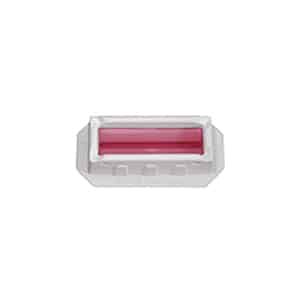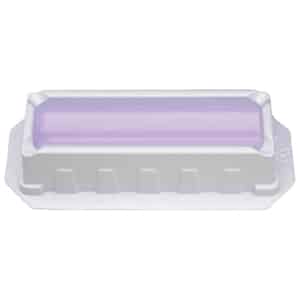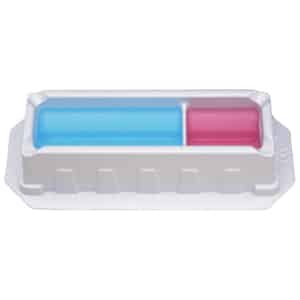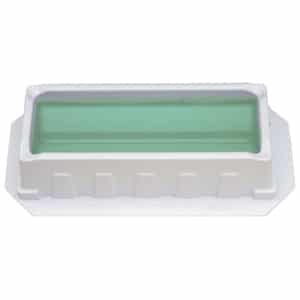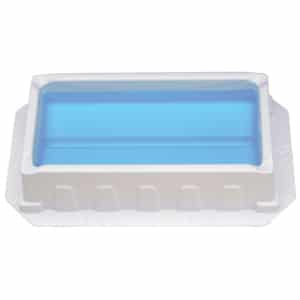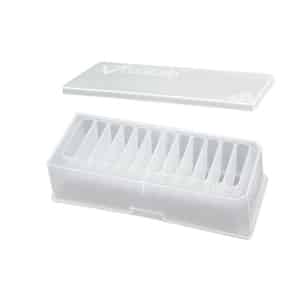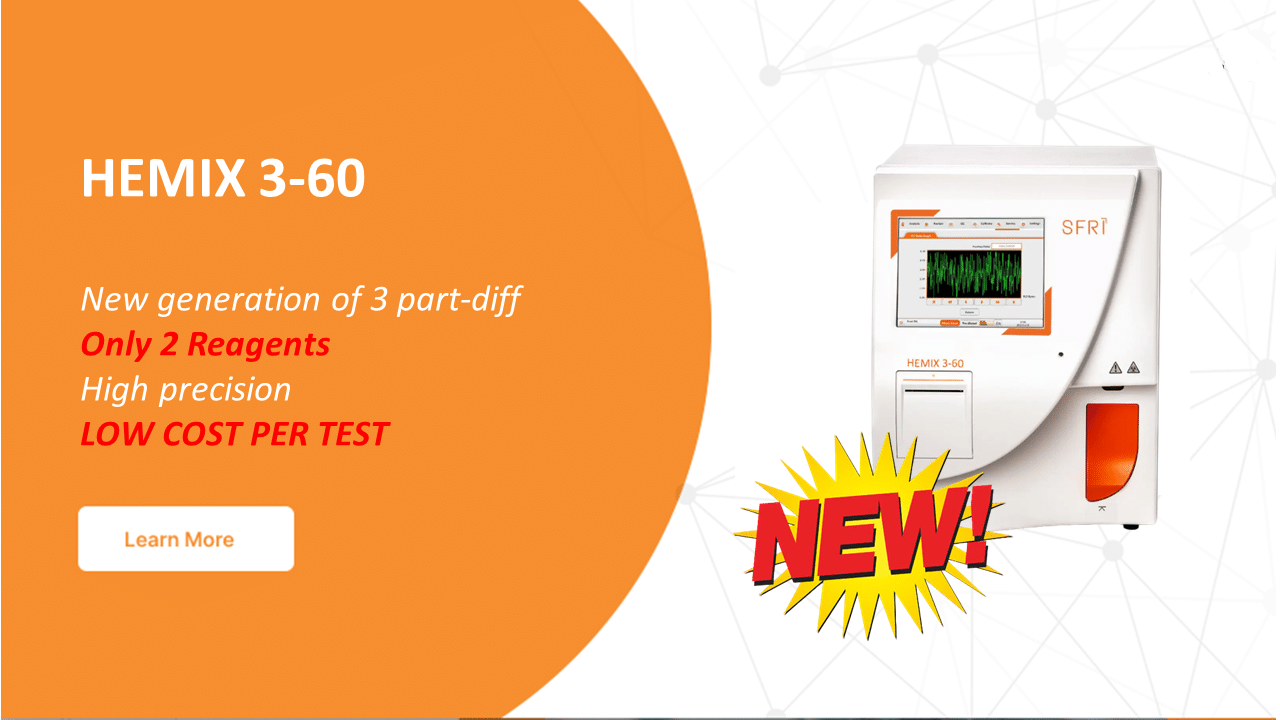REAGENT RESERVOIR
VistaLab reservoirs are uniquely treated to provide the lowest residual volume in the industry, meaning maximal reagent recovery.
- Trough-within-a-trough design to recover the “last few drops”
- Pour-off spouts at every corner
- A wider base for stability
- Free of animal products
- Sterile reservoirs are certified RNase/DNase free and non-pyrogenic
- Available sizes:
- 10 mL, 25 mL, 50 mL and 100 mL (with lid option available)
- 25 mL divided
- 12 channel with lid (fully autoclavable)
Features
FAQs
What materials are VistaLab Reagent Reservoirs made from?
VistaLab Reagent Reservoirs are made of Polystyrene; with the exception of our 12 Channel Reservoir which is made of pure Polypropylene.
What is the Expiration Date for sterile Reagent Reservoirs?
All VistaLab Technologies sterile disposables (Tips, Reagent Reservoirs, Wobble-not Serological pipets) are good for 3 years from the Date of Manufacture found on the Certificate of Analysis included in each case; as long as the packaging is unopened and uncompromised.
Can VistaLab Reagent Reservoirs be autoclaved?
Only our 12 Channel polypropylene reservoirs may be autoclaved. We do not recommend autoclaving our polystyrene Reagent Reservoirs, as they can experience significant geometric warping.
Are there animal products used in the production of Reagent Reservoirs?
VistaLab Reagent Reservoirs are free from ALL animal materials.
What does certified RNase/DNase free mean?
Reagent Reservoirs are manufactured in a clean room facility free from human animal contact to prevent RNase and DNase contamination. Reservoirs are then tested by an independent testing laboratory using the protocol described on the Certificate of Analysis and labeled certified RNase/DNase free if the acceptable industry standard is met.
What does non-pyrogenic mean?
Pyrogens are bacterial endotoxins that can be harmful to cell cultures. Reservoirs labeled non-pyrogenic are certified to have endotoxin levels below the acceptable industry standard as determined by an independent laboratory using the protocol described on the Certificate of Analysis.

